Going The Distance
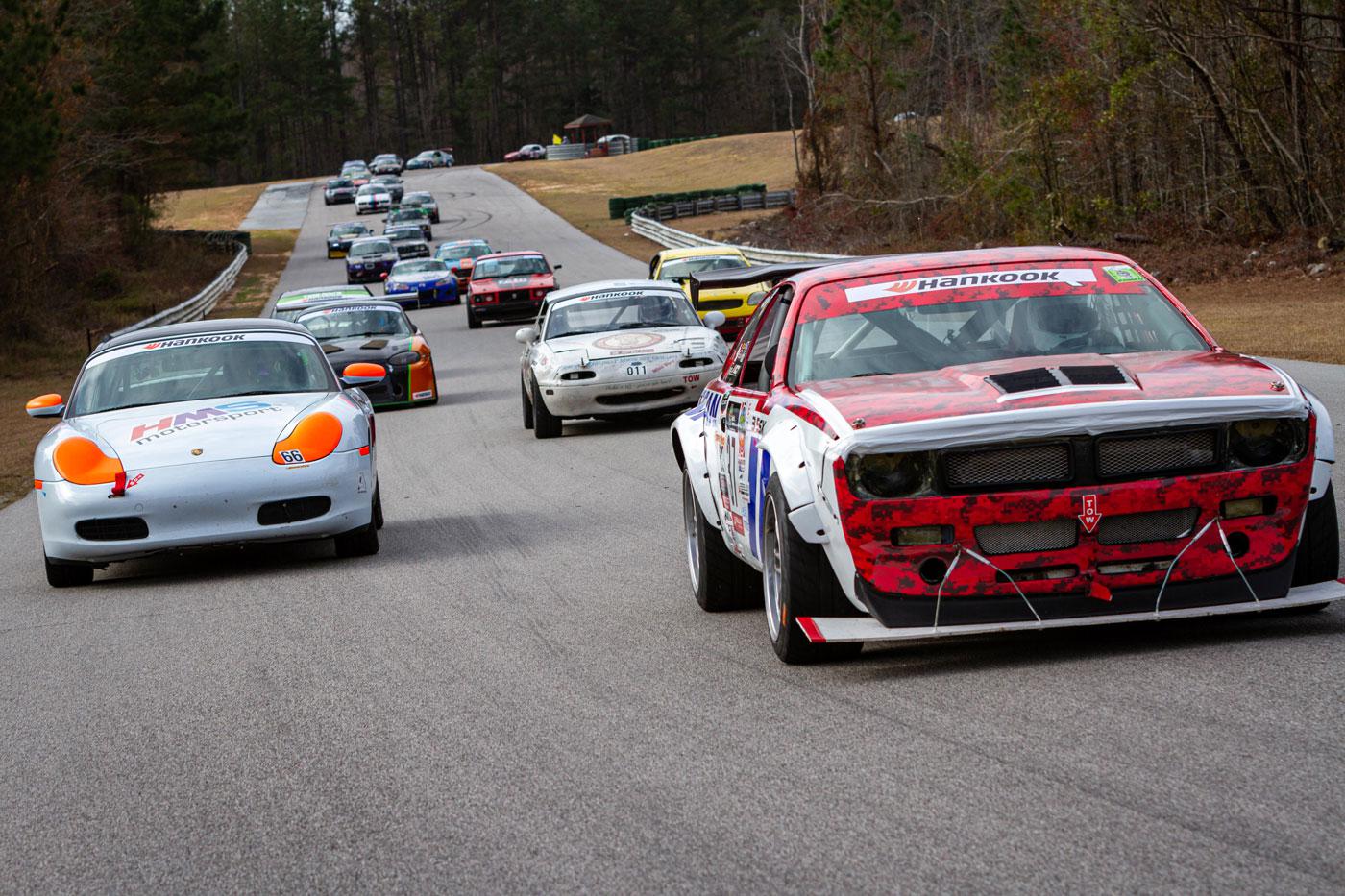
While some budget-focused endurance series take an anything-goes, lap-time-based approach to eligibility and classing, others use price caps or performance indexing systems that are designed to strike a balance between cost and competitiveness.
Nobody has ever claimed that racing is inexpensive, but amongst its various disciplines, road racing can be particularly bruising to one’s wallet. Even for those looking to compete at the grassroots level, wheel-to-wheel racing with sanctioning bodies like Sports Car Club of America and the National Auto Sport Association has long been a costly proposition that’s simply out of reach for many would-be participants.
As a result, a group of racers decided to take matters into their own hands and created the 24 Hours of Lemons back in 2006. In contrast to traditional club road racing, Lemons shifted the focus away from out-spending the competition with a purposely low-cost alternative where the top priority was simply having fun at the track with your team and the wider racing community.
The series has inspired others to follow suit in the years since, and these days a number of different options exist for competitors who want to get involved in endurance racing without breaking the bank. Although each series takes a slightly different approach to the overall concept, the primary goal of making wheel-to-wheel road racing more accessible remains the same.
24 Hours of Lemons
Jay Lamm said that the idea to create the budget endurance road racing series 24 Hours of Lemons in Emeryville, California, was inspired by the frustrations that he and his friends shared about the various motorsports events they were participating in.
“People were using their checkbooks to compete rather than their own skills and creativity,” Lamm said. “This just seemed like a fun, quirky way to take the checkbooks out of the equation. Let’s drive cars where we don’t really care what happens to them. If something blows up, no big deal.”
The first race was intended to be a one-time event. Lamm and his friends had no aspirations of creating a lasting, organized series. But Lamm’s background in automotive journalism put the 2006 event on the radar of some colleagues who wanted to get involved as well. “It was supposed to be 12 cars. I was going to rent a little circle track, and we were going to have a fun weekend. But as we started putting it together, more and more people wanted to do it and asked if we had room on track for another car. We actually wound up having 33 cars at that first race.”
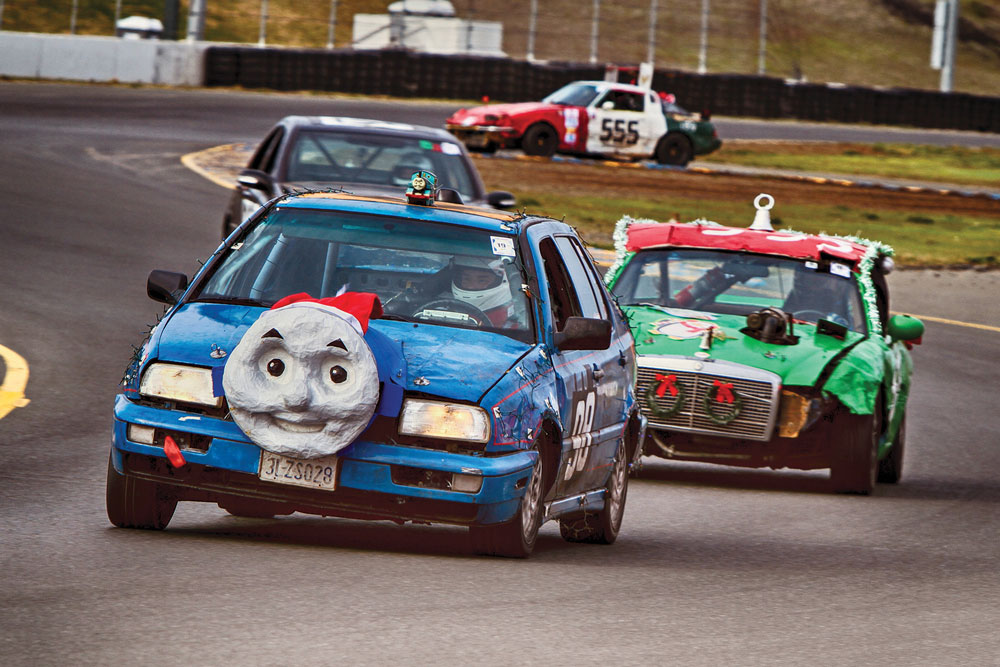
Word quickly spread to the wider automotive community after those journalists published their stories from the event, and a flood of racers wanted in. “It wasn’t intentional on our part, but it became clear, in retrospect, that there was a larger issue in road racing. If you want to race dirt track, for instance, there’s always a place you can go and figure what you need to do in order to participate. But road racing—and particularly endurance road racing—always had this artificial mystique around it that made it seem impossible to get there. It was just wrapped in this sense of exclusivity. More than anything else, the psychological barriers were very high. By making this thing cheap and funny, we kind of addressed that without even knowing it.”
The series puts a $500 cap on the purchase price of teams’ cars, and for every $10 they go over that cap, the team is given a penalty lap. While the fun-loving nature of 24 Hours of Lemons brings with it a sense that the events are more about the experience than where a team could potentially place in a given event, he admitted that there are some who are there to win.
“Every car goes through tech inspection at every event to be checked for safety and re-judged for its value. There’s basically two sets of cars and teams that show up: About 80% of the field has no chance of winning A, B, or C class. Whatever class we put them in, they just don’t have a prayer. And frankly, we don’t worry about those cars too much. If they overspend, or if they’ve got a ‘cheaty’ motor, it doesn’t matter if they have no chance of winning. But there’s also a much smaller set of teams that are going to be competitive in their class, or even for an overall win, and with those teams we need to be a lot more strict. ‘You say it’s a $500 car—do you have documentation that proves that? You say you sold off this expensive part to some guy—do you have documentation of that?’ But the fact of the matter is, a lot of the expensive, cheaty stuff that people do doesn’t improve their chances. In most cases it harms them. Being reliable and staying out of trouble is way more important than having an extra 30 horsepower.”
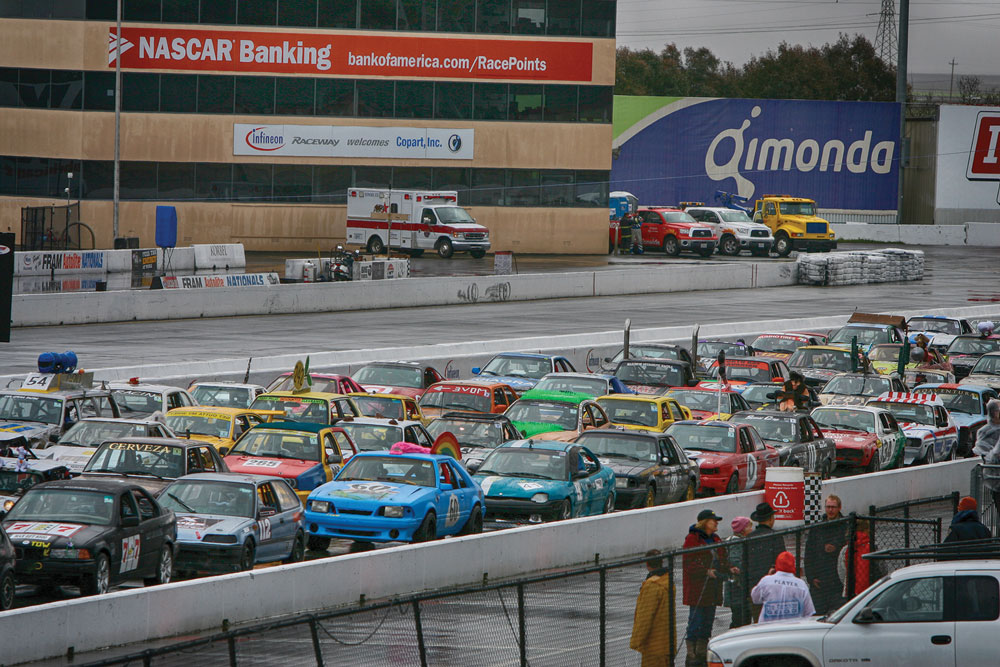
As Lamm mentioned, teams are allowed to sell off parts from a car to lower its effective value. “So, for example, if you buy a $1,000 car and can prove that you sold the seats to someone for $500, then we consider that a $500 car.” Components that are engineered by the teams are also not counted against the value of the car.
“If you want to put on forced induction, fine. Do it without overspending the limit, and show us how you did that,” he continued. “We have a team with an Audi A6 that’s using an active aero system made from snowmobile parts that they mounted in the back seat. Knock yourself out—just don’t overspend the limit.”
He also pointed out that teams that aren’t concerned about actually taking home a win have plenty of incentives to bring out a car and compete. “We have plenty of guys and gals who show up with cars that regularly get a lot of penalty laps, and they’re never going to be in contention for a win. There are a lot of other awards—there are trophies for making everyone laugh, or for cooking a good BBQ, or for making some kind of heroic fix on your car. A lot of different things can motivate a team, but ultimately the main idea is to go out racing with your friends for a weekend and have a good time.”
ChampCar Endurance Series
Founded in 2009 and formerly known as ChumpCar, the ChampCar Endurance Series based in Arrington, Virginia, is a not-for-profit, member-owned club that essentially started as a spin-off of the 24 Hours of Lemons series. The idea was to create a series for teams that wanted to take the racing a little more seriously while still maintaining a similar approach to costs.
“Although we have classes, they’re kind of secondary here,” said Dana Morrison. “Our structure is built around the idea that every single car can run for the overall win at an event. The system is centered around equalizing all of the cars in the race so that any car that a team chooses to run could potentially be an overall winner.”
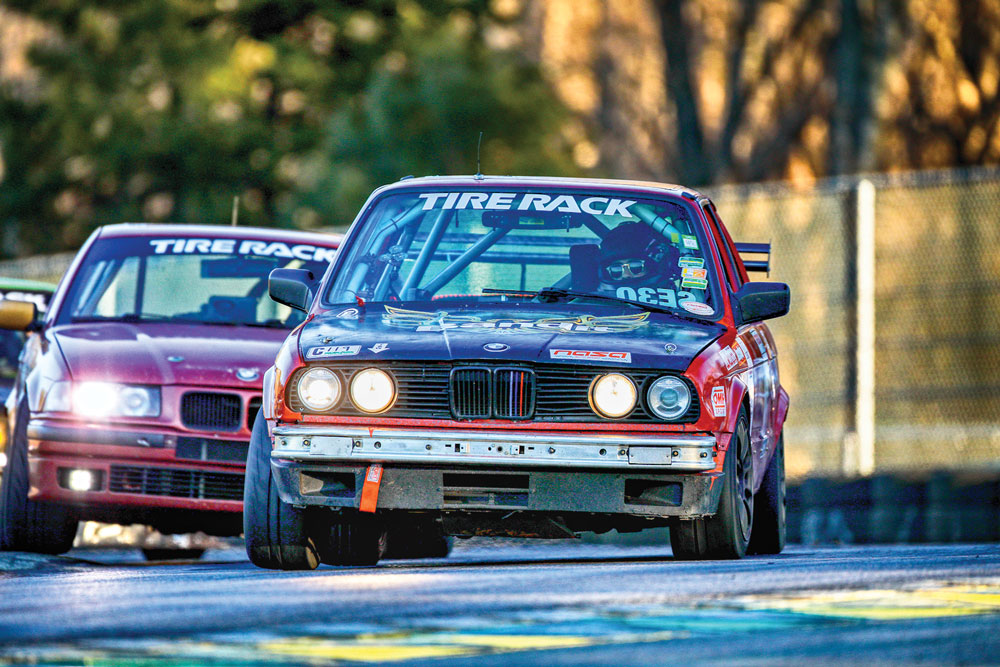
During the ChumpCar days, the series put a $500 market value price cap on the cars that teams could use—a concept borrowed from the 24 Hours of Lemons series—but Morrison said that they eventually scrapped that idea entirely, choosing instead to establish a Vehicle Performance Index (VPI) system that would assign a point value to a given car based on its performance potential.
The series essentially caps a given car’s VPI at 500 points, and penalty laps are given to teams for every 10 points over the limit that their car exceeds. If a car is valued at a VPI of 530, for example, that team would start a typical ChampCar race with three additional penalty laps. For races that are longer than eight hours, that penalty is increased—12-hour races increase the penalty to one-and-a-half laps for every 10 points over the mark, while 14- and 24-hour events raise that figure to two laps.
“When we adopted that system, our president at the time selected the BMW E36 3-Series as the benchmark,” Morrison explained. “In other words, if you do nothing to this car other than basic race prep and the required safety upgrades, that’s your 500-point car. We looked at its performance and potential lap times and valued every other car off of that E36 metric.”
While that obviously encourages minimal performance modifications for that particular vehicle, the situation is substantially different for other popular platforms. “The idea was not to just say, ‘Okay, you need X amount of horsepower in order for, say, a Miata—which has a VPI value of 250—to make the same power as an E36,’” he continued. “It was more about how these teams would choose to set up the car in order to run similar lap times. One Miata team may decide they need power, but another might want aero, adjustable suspension, and upgrades that will improve durability.”
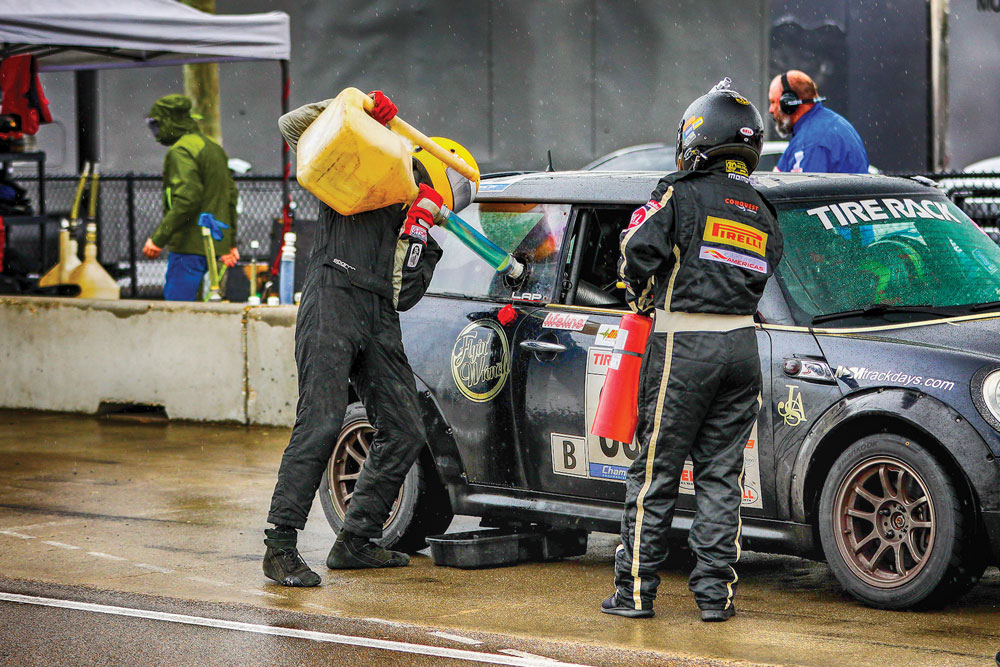
Modifications are assigned a specific point value—typically between 10 and 50 points, depending on what the modification is. While ChampCar allows some engine upgrades, the point structure is designed to encourage teams to avoid touching engine internals. “So, a wing or a splitter will be 10 points, while coilovers are 10 or 20 points per corner, but a camshaft swap might be 50 points,” said Morrison. “We want the internals to remain mostly stock because ChampCar is supposed to be a fun series. I don’t want this to become a place where we have to tear down engines and start measuring components. We rely on our competitors to adhere to the spirit of the rules and the series, and we don’t want to be sending out engines to machine shops three days after the event while we wait to award a race winner.”
He also noted that engine swaps are usually valued at about 50 points for the swap itself, and the additional horsepower gained by the swap typically adds to the point value on top of that. To give teams an idea of what a given engine swap will cost them in points, the series provides teams with an online calculator.
Safety elements, which include brake upgrades and the mandated six-point roll cage, do not affect a car’s VPI. Although the structure encourages teams to keep their cars at or under 500 VPI, Morrison explained that some will choose to accept the lap penalties in order to run the car how they want to. “If a car is over 1,000 points, it goes into what we call our Exception Class. We designed this class for people who might have a race car from another series that they want to try out in ChampCar. The EC class is scored and the first-place finisher in the class gets a trophy, but they are not scored amongst the rest of the field outside of their class. It’s basically its own race within a race, and it allows people to try out the series without making major changes to their existing race car.”
Lucky Dog Racing League
Like ChampCar, Lucky Dog Racing League in Martinez, California, was created to give would-be Lemons racers a series that takes the racing a little more seriously, but stops short of the perceived complexity, cost, and politics involved in SCCA and NASA club racing.
“The concept behind Lucky Dog has always been about being easy to work with,” said Cathy McCause Fuss. “What we saw was that complex rulebooks and car evaluation processes in other series had gotten to a point where folks didn’t really understand what kind of car they needed to build, and new car builds were starting to level off as a result.”
To address that, the series is designed around two main rules: All cars must be a 2006 model year or older, and all cars must run the series’ Hankook RS-4 spec tire. To keep the playing field level, qualifying sessions are held before each race, and cars are categorized into A, B, and C classes based on the resulting lap times.
“We’re looking at average lap times for whatever has shown up at the track for a given event,” Fuss explained. “If they go out and qualify as a Chihuahua but prove to be a Greyhound in the race, I’ll move them up a class—or even two classes, depending on where they’re at. The same thing applies the other way around—if a team has a great qualifying session, but they’ve lost a cylinder during the race and they’re running like a Basset Hound, we may move them down for the day. Classing typically just comes down to the capabilities of the cars and their drivers.”
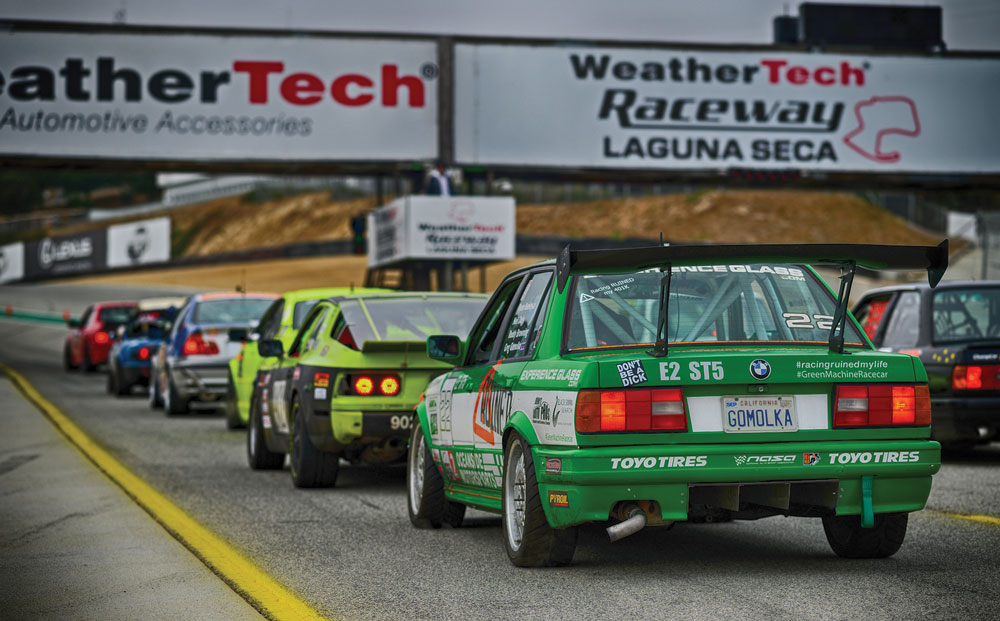
That means that teams aren’t confined to a specific cost or performance cap, but Fuss is quick to point out that endurance racing formats tend to favor durability over pace.
“Generally speaking, there are no penalties for car modifications. There’s a large number of E36 and E46 BMW 3-Series cars—probably half of the field is BMWs at this point—and Mazda Miatas have always been part of the landscape. We have BMWs and Miatas that are mostly stock, and we have Miatas that have GM 2.4-liter Ecotec engine swaps as well as E36 BMWs that have LS swaps. A lot of these folks are coming over from disciplines like autocross and circle track, and they feel like they’ve got to build a really fast car in order to be competitive. But what they eventually come to understand is that it’s more about reliability and carefully executed pit stops. It’s always interesting to see who the champions are at the end of the year. It’s usually not the teams that spent a lot of money doing crazy things to the car. The LS swap thing has gotten incredibly popular in the series, but doing that tends to introduce reliability problems.”
As with other series, Lucky Dog requires safety equipment like SCCA-spec roll cages, and it also requires a dash bar as part of that system. Fuel cells are limited to 24 gallons, and Fuss noted that most race teams have an in-car fire suppression system installed as well.
As a result of the series’ design, tech inspection focuses mainly on the safety elements of the car, but there is a ceiling for the performance capability of the cars that teams can race with Lucky Dog. “If teams are running times that are much faster than the rest of the field, they may be hit with a Super Dog penalty,” said Fuss. “We give teams four instances to hit Super Dog, and then we pull them off of the track for the day. This is ultimately an amateur racing series, and a newer driver is not going to understand the difference between a skilled, careful pass and feeling like their doors were just blown off. We don’t want to terrify the core group of racers with cars that are going crazy-fast.”
That said, the faster A-Class cars in the Lucky Dog series tend to have race-prepped suspension setups, well-sorted aerodynamics packages, and a power-to-weight ratio that keep things interesting. Fuss told us that the spec tire rule tends to be the greatest equalizer. “That has helped to manage the speed in my fields, and it has also helped with costs,” she said. “I don’t want this to be a ‘wallet’ race series. I have to regularly remind these teams that IndyCar is not going to be out there scouting you. You’re racing for trophies made from car parts that look like dogs.”
American Endurance Racing
American Endurance Racing (AER) in Philadelphia, Pennsylvania, is another series that uses qualifying session lap times and historical performance data to classify vehicles rather than limiting teams’ spending through a price cap or VPI. John Kolesa said that American Endurance Racing tends to appeal to sportsman-level road racers—those with club competition licenses who are looking to build and tune a car in their own shop and campaign it at a level beyond grassroots racing. “Performance-wise, there are a lot of cars in our series that I’d call ‘BMW Spec E46 Plus’—cars that might’ve started out as Spec E46 cars that have been modified to be a bit faster and more durable for an endurance format.”
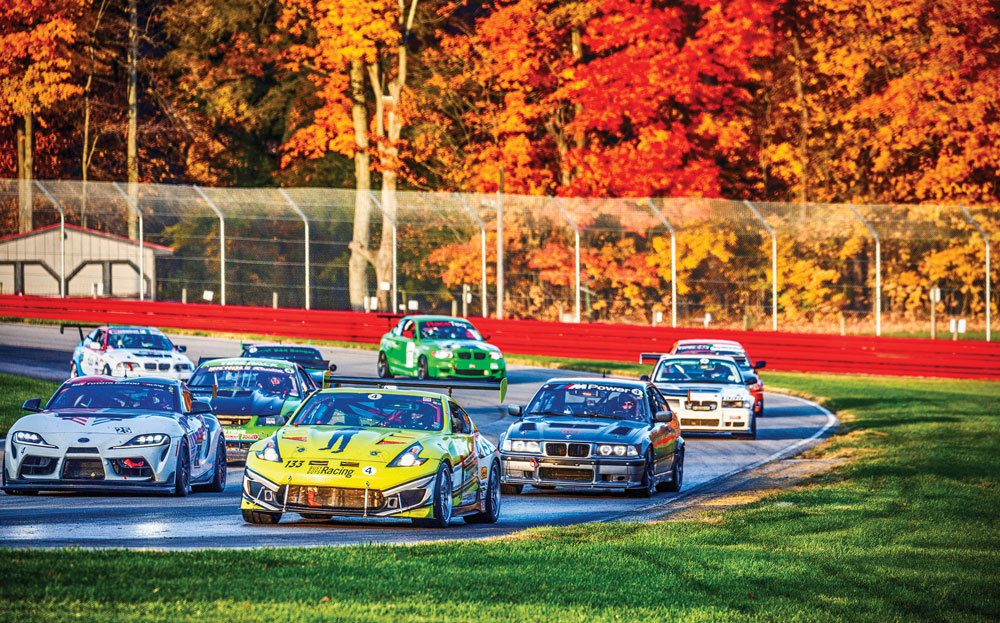
AER requires teams to use a tire with a treadwear rating of 200 or higher, but outside of that, Kolesa said that teams are free to do what they’d like. “The modifications don’t necessarily affect classing—it’s done strictly by lap times. Logic dictates that performance modifications will generate faster lap times, and we reserve the right to move people around if they’re much faster in the race than they were in qualifying, but that doesn’t happen very often.”
While that opens up teams’ options for powertrain upgrades, he told us that most focus on suspension, aerodynamics, cooling, and other improvements that will keep the car happily humming along for eight hours on-track. “One thing we often hear from people who’re coming from grassroots series to race with us is that they like having the freedom to build and spend as much or as little as they want to,” Kolesa explained. “They don’t have to use junkyard stuff, and they also don’t have to use the most expensive stuff out there in order to make the car competitive.”
Cars in the series get an annual safety tech inspection, and teams supply the series organizers with build sheets so that they know what to expect, but the on-track performance is ultimately the biggest factor when it comes to determining which class a team will land in. “We have an analytic that we can run that sorts the field in more than a dozen different ways, and that includes some weighed averaging of all the drivers on a team during their qualifying sessions. That helps us look at a team’s overall performance rather than just the fastest driver’s fastest lap. We are trying to group cars so that, at the end of eight hours, everybody in the class is pretty close to each other.”
SOURCES
24 Hours of Lemons
24hoursoflemons.com
American Endurance Racing (AER)
americanenduranceracing.com
ChampCar Endurance Series
champcar.org
Lucky Dog Racing League
racelucky.com
 MEMBERSHIP LOGIN
MEMBERSHIP LOGIN JOIN PRI
JOIN PRI


